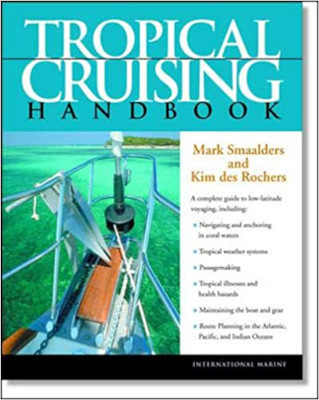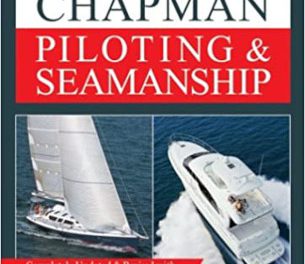
One sailors’ lament might very well be “so many sailing books, so little time.” If time for reading them is not the issue, then space for storing them (particularly if you are cruising) will be. Mark Smaalders and Kim des Rochers offer assistance if you’re heading toward tropical waters. Their book, Tropical Cruising Handbook, condenses much of the information you’ll need into one compact source with some terrific references you’ll want to look into before you go. I read this book — meant for those cruising between latitudes 23.5 degrees north and south of the equator — while vacationing at 48 degrees north. Even so, I found much of interest.
I was specifically interested in Mark and Kim’s information about necessary customs and immigration permits and procedures and their list of resources which should be valuable to anyone planning a voyage. This is information which does not seem to be otherwise available in one neat package. This section also includes what you will want to know about immunizations and protecting yourself from tropical illnesses, infections, and poisonings which tropical fish, reptiles, and plants (sharks, alligators, and jelly fish, for example) can inflict. Like so many thrillers, you probably shouldn’t read this section just before going to bed. There is also a section on the cultural exchange which occurs when North American sailors visit tropical communities in the Pacific and Atlantic.
Perhaps the best part for anyone considering a lengthy cruise is the comprehensive review of popular tropical cruising destinations including currents, geography, weather, culture, formalities, and health and safety issues. Areas reviewed in this fashion (with helpful planning charts for reference) include the West Indies, Central America, the Caribbean areas of South America, the South Atlantic, The North and South Pacific, the North and South Indian Ocean, and the Red Sea and Gulf of Aden. The ever-popular Mediterranean is not included because it is not within the tropical latitudes of 23.5 degrees north and south.
The book provides a nice primer on tropical ecosystems (coral reefs and mangrove forests) and weather patterns along with storm tactics for heavy weather. It discusses navigation and anchoring strategies with a specific focus on coral reefs – perils for you and protection for them. There are basic discussions of sails, sailing strategies, route planning, passagemaking, and “green cruising.” Another chapter sums up methods for providing ventilation, shade, and drinking water while also reviewing provisioning, laundry, and dealing with tropical pests such as roaches and mosquitoes. Mark and Kim also offer an extensive discussion of metal corrosion and a brief review of boat and engine maintenance and necessary spares.
It’s cold up north where we sail, and we won’t be going south anytime soon. If we were heading south, however, Tropical Cruising Handbook is one reference I’d study before leaving and take along with me when the docklines were finally untied.
Tropical Cruising Handbook by Mark Smaalders and Kim Des Rochers, (International Marine, 2002; 376 pages)




